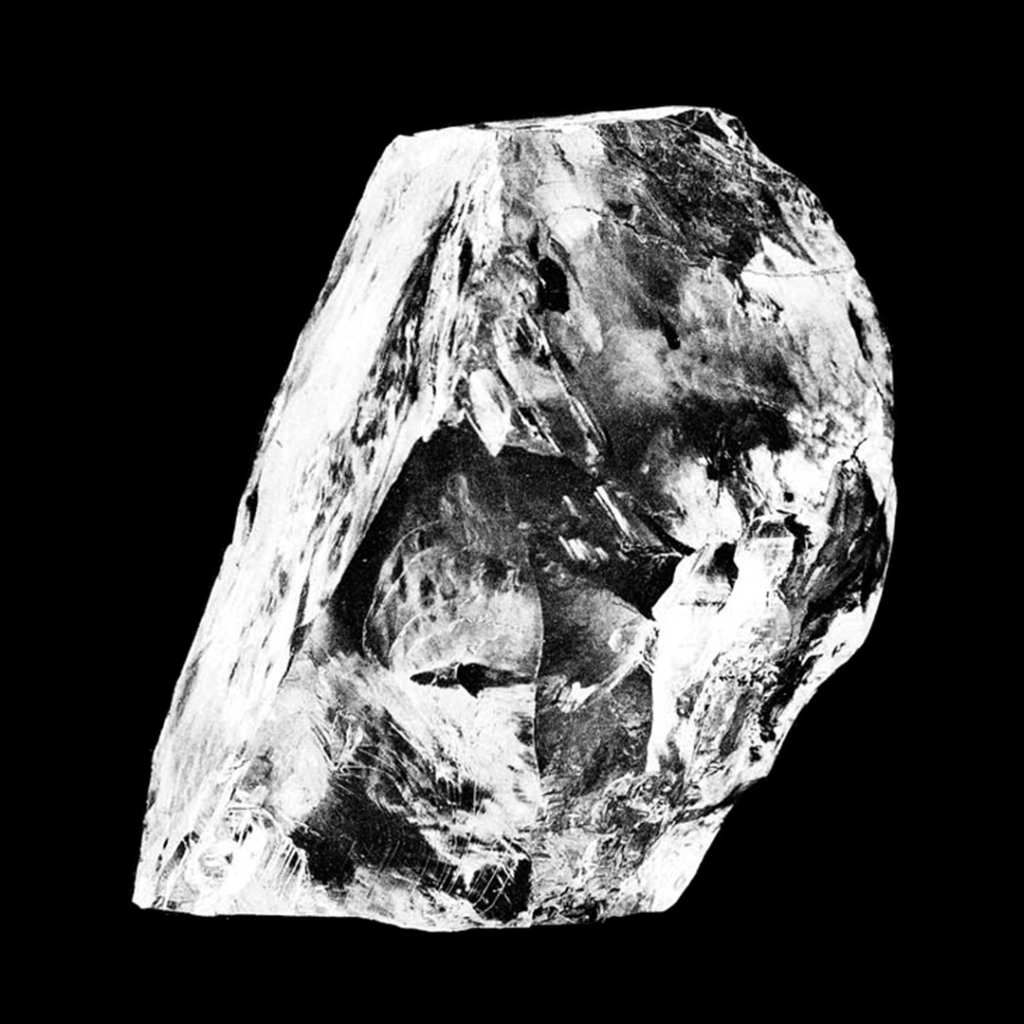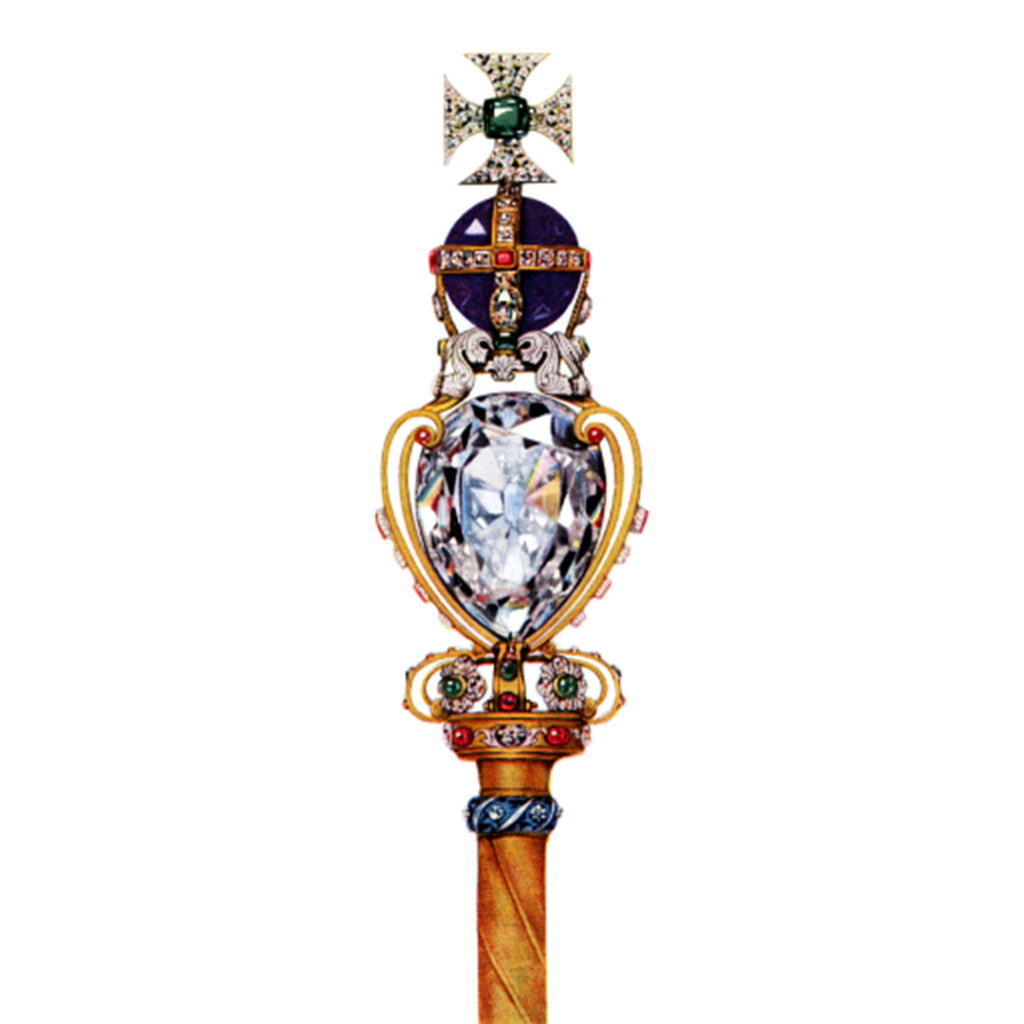It started out as just another day at work that ended with one of the most exciting diamond discoveries ever made: The Cullinan Diamond. At 3,106-carats the rough diamond was enormous and that alone was enough to set it apart from other stones, but it also happens to have a particularly high clarity and white color. At first no one wanted to purchase the stone, but ultimately it ended up as part of the British Crown Jewels. So how did that happen?

On January 26, 1905, Surface Manager of the Premier Mine, Frederick Wells discovered the gigantic rock, near Pretoria in the Transvaal, then a British colony, in what is now South Africa. It was named after Thomas Cullinan, Chairperson of the Premier Mine.
The decision was made to send the diamond to England to find a buyer. An elaborate plan was put in place to transport this treasure. The rock was shipped to England on an armored boat complete with detectives and armed guards. However, it was all a ruse to throw everyone off track, the real Cullinan diamond had been sent to a broker in England via registered mail. When the diamond didn’t sell after a couple of years, the Transvaal government purchased the stone for £150,000, or somewhere in the area of $21 million in today’s money.
Happy Birthday King Edward

The Transvaal government then gifted the rock to King Edward VII of England on November 9, 1907 for his 66th birthday as a way of mending relations between the two countries that had become frayed during the second Boer war. After being presented to King Edward in a ceremony at the Palace, the diamond was stashed away in Scotland Yard until he could figure out what to do with it.
The Asscher Diamond Company was eventually retained to cut the diamond. Based in Amsterdam, the firm was renowned for having the most exceptional diamond cutters in the world. Once again, the diamond was sent off with great fanfare and lots of security, but this time to Amsterdam. In reality, Joseph Asscher had slipped into England undetected to pick up the stone, which he allegedly put in his pocket and then left the country unnoticed.
Once the diamond was in Asscher’s possession, the real work began. First the diamond had to be cleaved, which is a process in which the rough diamond is split into smaller pieces to cut and polish. The stone was so large that a special clamp had to be made to hold it in place during the cleaving procedure. Cleaving is a delicate process; if it’s not done correctly, the entire diamond can shatter. After four days of preparing the diamond, Joseph Asscher was ready to cleave the stone. He hit the diamond with the cleaver and instead of the diamond splitting, the cleaver broke. He tried again and the stone split successfully. It took three artisans, working 14 hours a day, eight months to polish the stones.
Cullinan I-IX

The rough diamond yielded nine large stones, 97 smaller stones and some diamond shards. The nine largest stones were named Cullinan I – IX. The biggest, the Cullinan I is pear shaped and weighed in at 530-carats and the second largest, the oval shaped Cuillinan II is a hefty 317-carats. They were later renamed the Star of Africa, also known as the Great Star of Africa and the Second Star of Africa, respectively. These two sparklers were set in a brooch for King Edward’s wife, Queen Alexandra. King Edward eventually bought the Cullinan VI and VII as a gift for his wife. The remaining numbered Cullinan Diamonds were purchased by the South African government, which then gifted the sparklers to Queen Mary in 1910. The remaining diamonds were left with the Asscher Diamond Company as payment. The two largest Cullinan Diamonds were then put on display in the Tower of London, where the public could visit what were the world’s largest faceted diamonds at the time.
Crown Jewels

When Edward passed away in 1910, his son George ascended the throne. In 1911, When George V was coronated as King of England, the Cullinan III and IV were set into the coronation crown of his wife, Queen Mary. At the same time, King George V had the Cullinan I set in the Sovereign’s Scepter and the Cullinan II set into the Imperial State Crown. These two diamonds may be removed from their current settings and put back in their original brooch setting in the event that any member of the British royal family has an occasion to wear them. In 1953, Queen Mary bequeathed the gems to Queen Elizabeth II, who counted the Cullinan Diamonds three through nine as part of her personal property.
The Cullinan I and II diamonds remain a part of the British Crown jewels and were last seen at the coronation of King Charles in May 2023. The remaining Cullinan diamonds are part of the personal jewelry collection of the royal family today.
Featured image (top of page): Portrait of Queen Mary, from L’Illustration (France), edition no. 3713. Mary is wearing her crown, with the Koh-i-Noor diamond in the front cross, without its arches. She also wears the Cullinan I diamond suspended from Cullinan II as a brooch on her chest, 1914.
Authored by Amber Michelle
